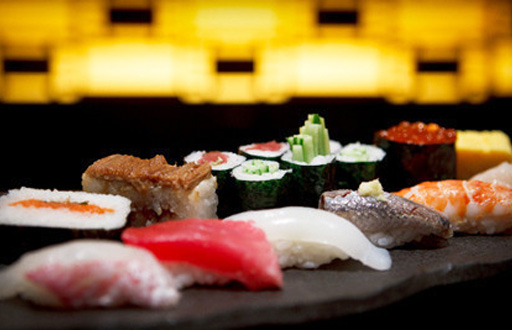Welcome to Facts Vibes! Discover fascinating tidbits about sushi in this article. From its ancient origins to modern variations, we’ll delve into the intriguing history and unexpected ingredients that make sushi a beloved culinary delight. Join us as we explore the world of sushi and uncover its hidden secrets.
The Fascinating History of Sushi
The history of sushi is a captivating tale that spans centuries and is deeply rooted in Japanese culture. Its evolution from a simple method of preserving fish to an art form revered around the world is nothing short of remarkable.
Sushi’s origins can be traced back to ancient Southeast Asia, where fish was fermented with rice as a means of preservation. Over time, this early form of sushi made its way to Japan, where it continued to develop and transform. It wasn’t until the Edo period (1603-1868) that sushi began to resemble the dish we recognize today, with the introduction of vinegared rice and the use of fresh, raw fish.
The popularity of sushi surged in the 20th century as refrigeration and transportation advancements allowed for the widespread distribution of fresh seafood. Sushi bars, or ‘sushi-ya’, became ingrained in Japanese culture, serving as social hubs where people could gather and enjoy this delicacy together.
In the post-World War II era, sushi underwent a global revolution as it gained popularity outside of Japan. Innovations such as the creation of the California roll and the inclusion of non-traditional ingredients helped sushi appeal to a broader audience and cemented its status as a beloved international cuisine.
Today, sushi continues to evolve and adapt, with chefs around the world putting their own unique spin on traditional recipes. Whether it’s a classic nigiri or a modern fusion roll, the allure of sushi lies in its rich history, exquisite craftsmanship, and the sensory experience it provides to those who partake in it.
Most popular facts
Sushi was originally developed in Southeast Asia as a means of preserving fish in fermented rice.
Sushi was originally developed in Southeast Asia as a means of preserving fish in fermented rice.
The word “sushi” actually refers to the seasoned rice used in the dish, not the raw fish commonly associated with it.
True. The word “sushi” refers to the seasoned rice, not the raw fish.
Sushi is traditionally eaten with the hands, not with chopsticks.
True.
It is considered a faux pas to mix wasabi directly into soy sauce when eating sushi in Japan.
Yes, it is considered a faux pas to mix wasabi directly into soy sauce when eating sushi in Japan.
The ginger served with sushi is meant to cleanse the palate between different types of fish.
Yes, the ginger served with sushi is meant to cleanse the palate between different types of fish.
Sushi chefs undergo years of rigorous training to perfect their craft and are highly respected in Japanese culture.
Sushi chefs undergo years of rigorous training to perfect their craft and are highly respected in Japanese culture.
Sushi is often served with pickled ginger and wasabi, which are believed to have antimicrobial properties that can help prevent food poisoning.
Yes, pickled ginger and wasabi are believed to have antimicrobial properties that can help prevent food poisoning when served with sushi.
The practice of eating raw fish likely originated in China, where it was salted and fermented, before spreading to Japan.
The practice of eating raw fish likely originated in China, where it was salted and fermented, before spreading to Japan.
Sushi rice is seasoned with a mixture of rice vinegar, sugar, and salt to give it its distinctive flavor.
Sushi rice is seasoned with a mixture of rice vinegar, sugar, and salt to give it its distinctive flavor.
The first known mention of sushi in literature dates back to the ninth century in Japan.
The first known mention of sushi in literature dates back to the ninth century in Japan.
Sushi became popular in the United States after World War II, when American soldiers stationed in Japan developed a taste for it.
Sushi became popular in the United States after World War II, when American soldiers stationed in Japan developed a taste for it.
Sushi has become a global phenomenon, with variations like California rolls and tempura rolls catering to different tastes.
Sushi has become a global phenomenon, with variations like California rolls and tempura rolls catering to different tastes.
Contrary to popular belief, not all sushi contains raw fish—vegetarian options and cooked seafood are also common.
Not all sushi contains raw fish. Vegetarian options and cooked seafood are also common.
The quality of a sushi restaurant is often judged by the freshness of its fish and the skill of its sushi chef.
The quality of a sushi restaurant is judged by the freshness of its fish and the skill of its sushi chef.
In Japan, it is customary to eat sushi in one bite to fully experience the flavors and textures.
In Japan, it is customary to eat sushi in one bite to fully experience the flavors and textures.
In conclusion, sushi is not only a delicious and diverse cuisine, but it also holds a rich and fascinating history. From its origins as a street food to its current global popularity, sushi continues to captivate people around the world. Its combination of flavors, textures, and presentation make it a truly unique culinary experience that should be celebrated and enjoyed. So, the next time you indulge in sushi, remember the fascinating facts that make it so much more than just a meal.
